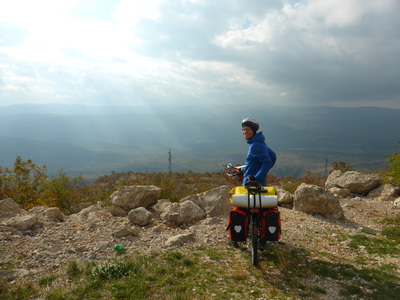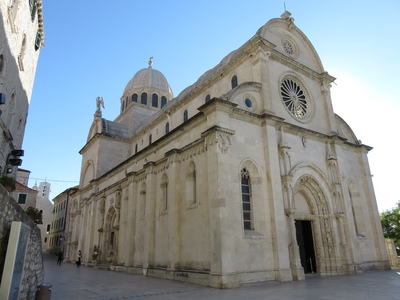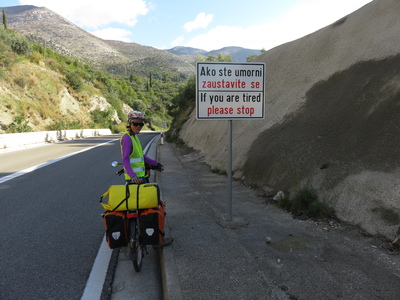Down the Dalmatian coast
Posted on 2018-11-24
After crossing the Velebit mountain range, we immediately entered a completely different part of Croatia. For one, the weather changed abruptly, to a Mediterranean climate. To us, it felt like it was summer again! The Dalmatian coast, referring to the coastal region of Croatia from Zadar in the north to Dubrovnik in the south, is also extremely touristy, especially in summer, and almost everyone living here seemed to have rooms and apartments for rent. The tourist money here made things feel a bit more developed, compared to continental Croatia. However this also meant that it was difficult to find hosts on Couchsurfing or Warmshowers, so this became the most expensive section of our trip so far.
We took advantage of the warmer weather to take a few rest days off the bicycle, to catch up on our administrative work (updating this blog, mainly) and to recharge. We booked an Airbnb apartment in Jezera, a village on Murter island in between Zadar and Split, that was literally just a few steps from the sea. Such luxury 😎
Breakfast in front of our apartment in Jezera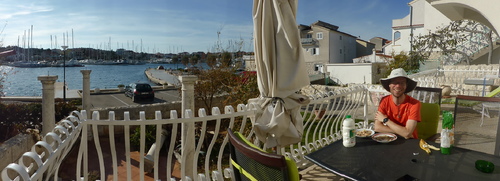
It is easy to see why the Croatian coast is so popular with tourists. The landscape is simply spectacular, with the Mediterranean sea on one side, and majestic mountains on the other, rocky slopes and cliffs that seem to rise straight up out of the sea. In addition, the region has been inhabited since antiquity, and the rise and fall of empires over the millenia has left their mark. The area had the highest density of UNESCO World Heritage Sites on our route so far: we passed through sites in Zadar, Šibenik, Trogir, Split, and Dubrovnik - an average of about one site every two days - and several more sites on the tentative list. With so much to see, we had a hard time keeping up with cycling, sightseeing, and then sorting and captioning all our photos!
The Church of Saint Donatus and the ruins of the Roman Forum in Zadar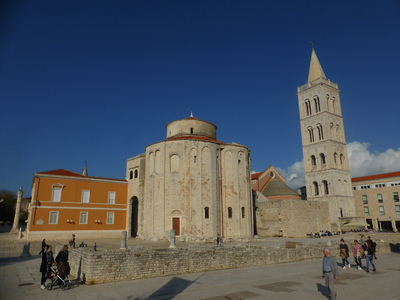
Cathedral of Saint Domnius on the Peristyle, a monumental court in the Diocletian's Palace in Split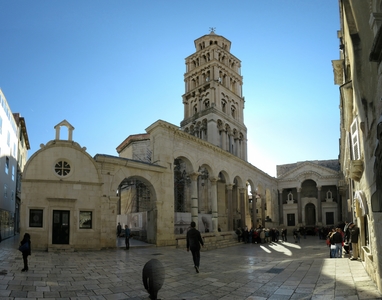
The walled Old City of Dubrovnik
However, such majestic terrain also made for some tough cycling days. Thankfully, the roads at this time of year were relatively quiet (compared to summer, when we hear that they are full of tourist buses and cars), and we also tried to take smaller roads when possible. To avoid a long stretch of major road after Split, we decided to cycle on Korčula instead, an island that is accessible by ferry. Unfortunately, this is where our luck with the weather ended. Korčula is said to be the sunniest region of Croatia, with more than 300 days of sun per year, but the day we were there was one of the stormy ones, and we had to abort our wild camping plans there. Nevertheless, we still managed to catch some fantastic views and enjoy our time on the beautiful island.
Secluded bay of Pupnatska Luka on Korčula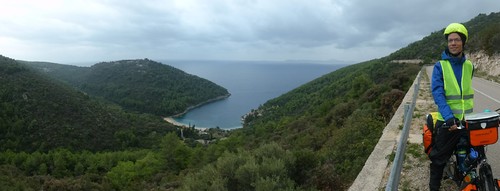
After almost 3 weeks in Croatia, we then continued our way down the coast to Montenegro, marking the end of our stay in the European Union for now, until we enter Greece.
